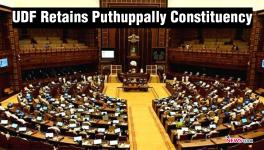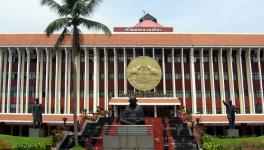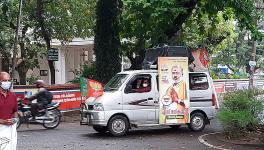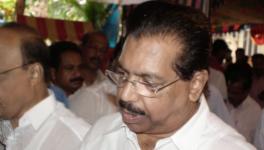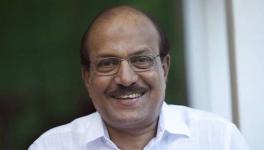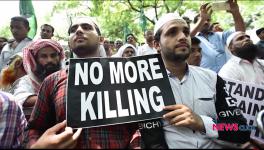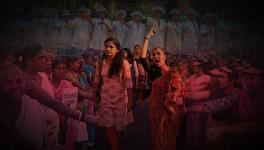What the Erosion of Christian Voters Could Mean for UDF in Kerala
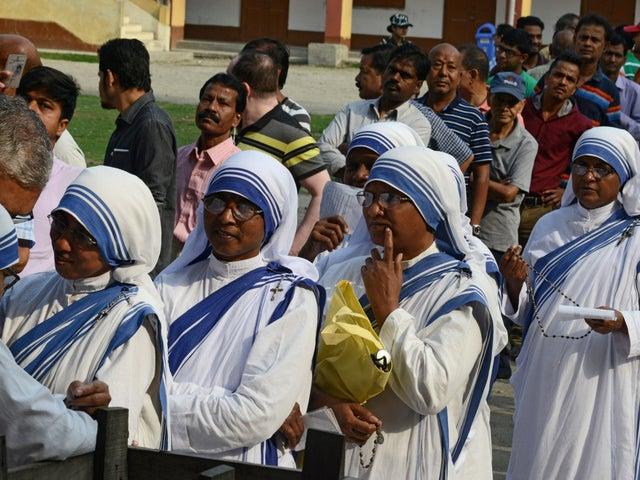
Representational Image. Image Courtesy: AFP/Getty Images
If there is one statistic that stands out among all the data points from the local body polls in Kerala, it is the shifting of a large number of Christian voters away from the United Democratic Front (UDF) in favour of the Left Democratic Front and, to some extent, the Bharatiya Janata Party (BJP).
Before going any further, it needs to be emphasised that in Kerala, the Congress-led UDF is the party of minorities, who make up 44% of the electorate. The Muslims, more dominant in north Kerala (or Malabar), and the Christians, who dominate central Kerala (or central Travancore) have been the bulwark of the UDF’s base in the state right from the 1950s.
While there have been previous instances of minor erosions, often limited to particular localities, none of them have been as extensive or large-scale as witnessed in these local body polls. The effect of this erosion was witnessed most prominently in the central Kerala districts of Kottayam, Ernakulam, Pathanamthitta and Idukki. What makes it worse for the UDF is that this phenomenon extends to the high-range areas in Malabar and other districts with significant Christian populations, and this has consequences for the structural composition of the UDF and, to the Kerala polity at large.
On first glance, it was assumed to be a direct fallout of the exit of the Jose K Mani faction of Kerala Congress (M), the party the Syrian Christians (or Saint Thomas Christians) mostly identify themselves with, in the state. However, on closer inspection, it can be seen that this is only one of the many factors causing the exodus. The Jose K Mani factor did swing a few wards and gram panchayats and the Pala Municipality in favour of the LDF in its bastion of Kottayam, but this was more of a consequence of the larger undercurrents sweeping across the state.
At the heart of the puzzle lies the role of the Indian Union Muslim League (IUML), the second-largest constituent of the UDF. The IUML has been a significant player in the state elections since the first EMS Namboodiripad government of 1957, and even had a chief minister of its own, albeit briefly, ruling the state. The IUML is concentrated mostly in the Malabar region, specifically in Malappuram district, where it contests 13 of the 16 Assembly segments—winning a majority of these seats every election.
In the 2016 Assembly poll, while the Congress could win only 21 seats out of the 87 it contested, the IUML won 18 from its quota of 24 seats. The disastrous nature of that verdict notwithstanding, the Congress’s Christian support base was still intact but the result rendered the grand old party’s position considerably weaker within the UDF, with the IUML beginning to dictate terms on many issues.
Now, this flexing of the muscles by the IUML dates even further back to 2011, when the Assembly poll gave a wafer-thin majority to the UDF (72 seats against the 68 won by the LDF). In the ensuing scenario, the IUML pushed for a fifth minister in the council of ministers citing its strength in the Assembly (22 then). The IUML’s intransigence on this issue and Oommen Chandy’s decision to cede to it had a huge fallout with the Nair and Ezhava community leadership, represented by Nair Service Society (NSS)’s Sukumaran Nair and Sree Narayana Dharama Paripalanam (SNDP)’s Vellappally Nateshan, ganging up against the Oommen Chandy government and branding it pro-minority. They questioned the make-up of the Chandy Cabinet dominated by minorities with the lion’s share of ministries allotted to Christians and Muslims (including the minority representatives from Congress and Kerala Congress factions). As a consequence, in the 2014 general election, a significant percentage of the Nair votes switched en masse from the Congress to the BJP, with the BJP’s vote share seeing its first spike from a paltry 6% in 2011.
In the 2016 Assembly election, while the LDF struck deals with certain Christian denominations like the Malankara Syrian Orthodox Church, by allotting tickets to prominent individuals from the community and through other inducements, the Catholic community, who form the majority of the Christians in the state, stood rock-solid behind the UDF.
Come 2020, however, with Oommen Chandy deposed as chief minister and the UDF being led by Leader of Opposition Ramesh Chennithala, the sudden exit of the Jose K Mani faction of Kerala Congress (M) prompted the Syrian Christians to weigh their options.
The switching of allegiance followed some crucial developments involving the IUML, which the Congress leadership failed to anticipate or manage properly. Kicking off this stand-off was an article in the IUML mouthpiece Chandrika on the reopening of the Hagia Sophia as a mosque in Turkey, a museum since 1935 and formerly a church in the Roman capital of Constantinople.
This was followed by the IUML demand for the scrapping of the 10% upper caste quota instituted by the Pinarayi Vijayan government, carved out of the general category. In Kerala, all Muslims, regardless of their economic or social status, are categorised as OBCs, and the IUML stance became a sticking point for the Syrian Christians who come under the general category. The Congress dilly-dallied on this matter and would not take a stand for days on end, riling the Church.
Then came the issue of the UDF entering into an electoral understanding with the Welfare Party of India, the political arm of the Jamaat-e-Islami, which snowballed into a controversy following contradictory statements from leaders of the Congress on the nature of the alliance. The IUML’s decision to enter into these understandings with the Welfare Party in Malabar even in the face of opposition from organisations like the Samastha Kerala Jamiyyathul Ulama, a Sunni religious entity it draws its cadre from, was on account of the fact that the IUML base itself was being chipped away by extremist outfits like the Social Democratic Party of India (SDPI), floated by the Popular Front of India (PFI), growing at the expense of the moderate IUML.
This was probably the last nail, with the church’s fears and near-Islamophobic turn in the wake of the elopement of a few Christian girls with their Muslim partners to join the ISIS in 2015. The 2010 hand-chopping incident of TJ Joseph, a professor working with a church-run college, by the cadre of the PFI, was probably the turning point but, the trust deficit that developed at the turn of this decade has, almost, turned full circle with the clout the IUML began to wield in the UDF and what the church saw as provocations.
And then there were rumours floating around that IUML’s PK Kunhalikutty could emerge as the deputy chief minister if the UDF were to come to power early next year. With no prominent Christian in a leadership position (LOP, PCC Chief and UDF Convenor) in Congress after multiple decades of domination by the AK Antony—Oommen Chandy duo, this wasn’t music to the church’s ears.
A majority of the laity, for all their progressiveness, are very much an extension of the church when it comes to their politics, and the church has the ability to influence their opinions through pastoral letters and church-run newspapers like Deepika, Kerala’s oldest daily. The latest instance of this messaging was an article slandering LOP Ramesh Chennithala published in Deepanalam, an organ of the Pala diocese of the Syro-Malabar Church, possibly orchestrated by Jose K Mani.
The Catholic Church has a history of being political and, for the longest time, it was antagonistic to the Communist Party, with the clergy openly waging war against the first EMS Namboothirippad government of 1957 to eventually dislodge it through the “Vimochana Samaram” (liberation struggle). Of late, however, the church has been warming up to the CPI(M) under Pinarayi Vijayan. Although this was a work in progress, the entry of the Jose K Mani faction of Kerala Congress (M) exacerbated that process.
The BJP has also been casting its net wide and far for the various church denominations as it has come around to realise that it would never achieve the critical mass required to win elections in Kerala without one of the two minorities being on its side. Recently, Mathrubhumi daily reported how Prime Minister Narendra Modi met two cardinals from Kerala in a bid to drum up support for the BJP among the laity. BJP’s unexpected win in the Kerala Congress (M) fortress of Mutholi panchayat and gains elsewhere in the Christian countryside hints that even the BJP is making inroads into this critical support base. What the BJP has worked on is the “savarna” mentality of the Syrian Christians, who would like to imagine that they are descendants of Brahmins, believed to have been converted by Saint Thomas, just as the party massaged the “savarna” illusions of the Nair community earlier.
Apart from the LDF and the BJP, the stupendous growth of “Twenty20”, a corporate-backed political entity in the UDF bastion of Ernakulam, primarily at the UDF’s expense, should send alarm signals to not just the Congress but also every other political party.
In such a situation, it becomes incumbent on the Congress to set the UDF house in order if it has to make a comeback in 2021, with very little time left. Not long ago, the Congress had a powerful regional leader in Aryadan Mohammed with a thoroughly secular image to counterbalance the IUML in Malabar, and he was used to winning his bastion of Nilambur, the lone Christian-dominated pocket in Malappuram, even without the IUML support. In the absence of such strong satraps, the UDF will have to walk a tightrope to keep the IUML in good humour apart from winning back its Christian support base.
The author is an independent journalist and former editor of The Kochi Post.
Get the latest reports & analysis with people's perspective on Protests, movements & deep analytical videos, discussions of the current affairs in your Telegram app. Subscribe to NewsClick's Telegram channel & get Real-Time updates on stories, as they get published on our website.









